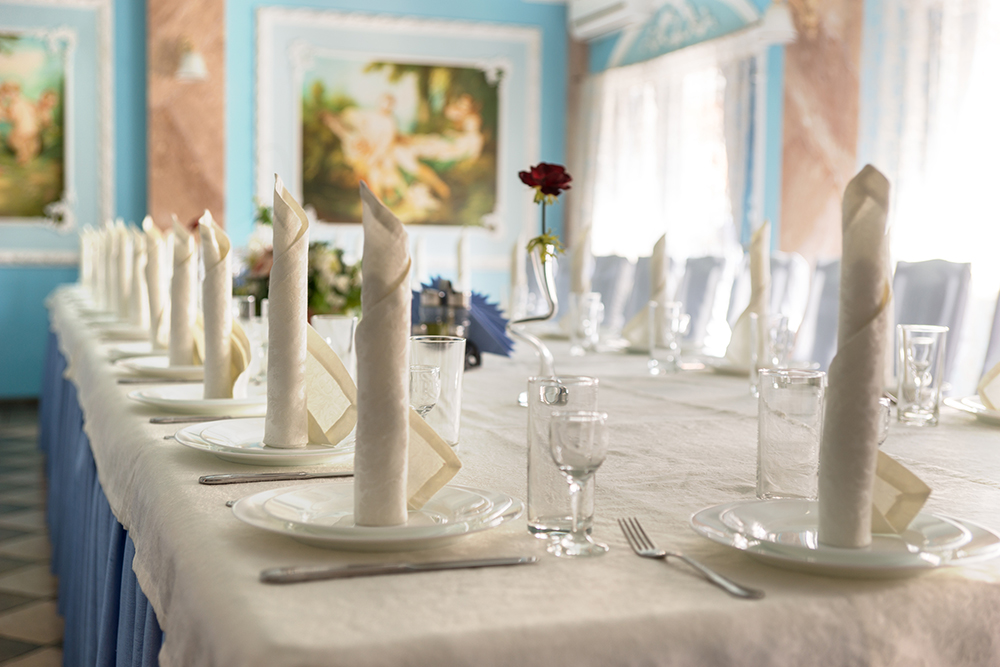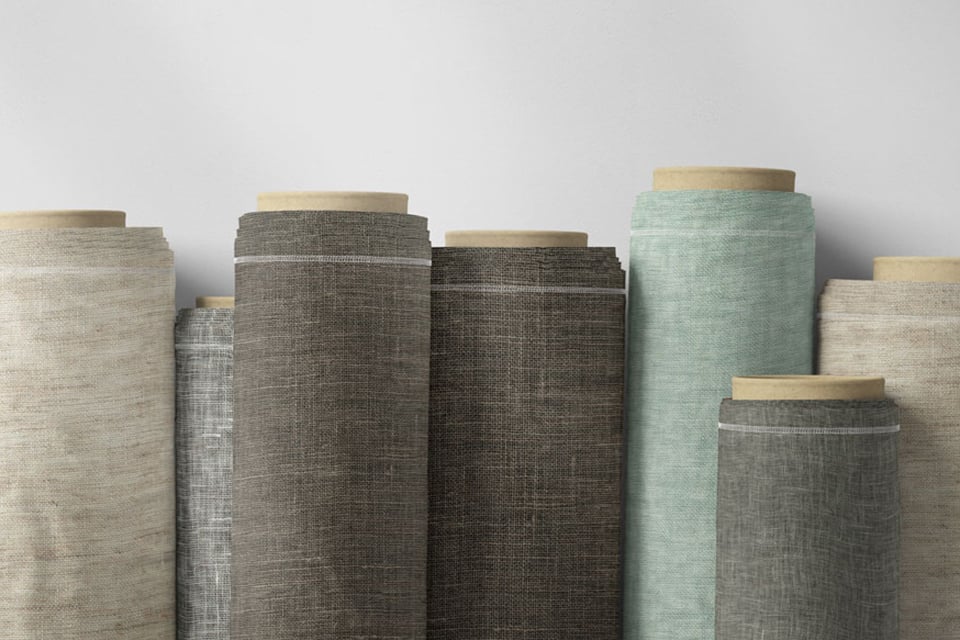Although both are made with natural fibers from plants, linen and cotton are two very different textiles.
Linen fibers are sourced from the stems of flax plants and are known for their extreme sustainability and durability. Flax plants are grown in cooler climates throughout the world in countries like France, Belgium, Italy, Ireland, China, and the United States.
Cotton, on the other hand, is one of the most widely produced fibers and comes from plants that have seed pods filled with ball-shaped clumps of fiber. Cotton plants are grown in warm climates in countries like the United States, China, India, Brazil, and Turkey.
Determining which is better, linen vs cotton comes down to several factors, including:
- Usage
- Comfort
- Care
- Price
How The Textile Is Used
Cotton and linen are both used in many everyday products. Even the dollar bills we use every day are made of 75% cotton and 25% linen, according to the U.S. Bureau of Engraving and Printing.
Some of the most common uses and the best basis for comparison are:
Bedding
If you value a good night’s sleep, linen bedding might be the better option. That’s because linen has temperature-regulating qualities. In other words, linen will keep you cool on warm nights and warm on cold nights. Linen fabric also takes any moisture from the body and wicks the moisture away.
Cotton is also used for bedding and definitely better than synthetic fibers. Because cotton fibers are much finer, manufacturers can weave the fibers into higher thread counts which adds to the comfort of cotton.
But, if you’re looking for high-quality bedding, linen is known to be the better choice.
Table Linens
The key to a beautiful and functional table setting is to use quality linens. They have to be able to handle spills, stains and frequent washings, so it is important to use quality fabrics that won’t fall apart or become threadbare.
and frequent washings, so it is important to use quality fabrics that won’t fall apart or become threadbare.
It is best to use soft, natural fabrics like linen or cotton. Synthetic fabrics don’t tend to have the look and feel of quality.
Linen fabric is highly absorbent, long-lasting and actually gets better with every wash. It also dyes well and can have prints put on it for the ultimate in customization.
Cotton, especially Egyptian cotton, is widely used for table linens. It has some of the same great qualities as linen, but the difference is that cotton doesn’t retain its look as long as linen after continuous washing.
Window Treatments
When it comes to window treatments, fine linen works very well. It has a luxurious look and feel to it.
Linen tends to be a more billowy fabric while providing a tailored look. This makes it a great fabric if you want airflow and light to filter into the space. It is also a strong fabric; it dries faster than cotton and is well absorbent.
Cotton drapes well and can be made with a tight weave to provide more privacy and block more sunlight. Sheer cotton curtains provide a light feel to a room by gently filtering out light.
Kitchen Linens
Linen is a great choice when it comes to kitchen linens. Linen is very absorbent and dries quickly. This allows you to use a kitchen towel several times without having to wash it in between uses since there will be no musty smell produced thanks to linen’s naturally antimicrobial features.
This can come in handy while hand-washing and drying dishes. Because of the durability of linen, you will get many more uses out of this high-quality fabric as well.
Cotton towels are also absorbent. However, they hold water much longer than linen, meaning it will take quite a while for cotton towels to air dry. Because they are not as durable as linen, you may find yourself replacing your cotton towels more often.
Pillows
Linen pillows require relatively low maintenance and bring a light feel to any space. When linen fabric is used to construct decorative pillows, it provides a tailored and luxurious look.
Linen is also twice as strong as cotton and more durable than wool, adding to the long-lasting appeal of this fabric. Linen absorbs up to 20% of its weight in moisture, making it cool to the touch.
Slipcovers And Upholstery
Linen is the perfect fabric for high traffic areas like sofas or chairs because it provides the comfort you desire after a long day, as well as the low-maintenance properties everyone desires.
Linen only requires occasional vacuuming to maintain its care, and this durable fabric resists stains easily. With more use, linen fabric actually becomes softer while maintaining its original sophisticated appearance. Linen is also highly breathable thanks to the natural fibers that allow air to circulate.
Cotton is a breathable fabric as well. However, while cotton can easily absorb dyes for displaying colorful patterns, it can also absorb dyes from other fabrics such as the clothes a person wears or decorative pillows.
Cotton will also easily shrink, which can be a problem when laundering slipcovers.
How The Textile Feels
How a textile feels is extremely important, especially for bedding or decorative pillows. While both linen and cotton  are breathable and absorbable, linen is the stronger of the two fabrics.
are breathable and absorbable, linen is the stronger of the two fabrics.
Why is this important? Bedding and pillows can be an investment for many, especially when purchasing higher-end brands. Because linen is a stronger fabric, it will last longer. While cotton bedding and pillows feel smooth when new, they can lose their softness and begin to disintegrate with repeated use and washing.
Linen, however, actually gets softer over time and improves as it ages. Even after cleaning it multiple times, linen becomes softer. Even better, linen is naturally anti-microbial and resistant to moths. This will help your bedding stay fresher and feel great for longer.
How To Care For It
How to care for a textile can play a significant role in which fabric a person chooses for their home or a business owner chooses for their product.
Caring for both textiles is pretty straightforward, although cotton can withstand the rigors of a washing machine slightly better than linen.
Cotton fabrics are typically washed with a normal cycle in the washing machine using regular detergent. With linen fabrics, however, it’s important to use the delicate or gentle cycle and a mild detergent to help keep fibers intact.
Both should be washed in cold or warm water, but never hot water as this can shrink both fabrics.
When drying, both should be dried on low heat and promptly removed. With linens, you should remove the fabric from the dryer while somewhat damp. An iron can be used on both fabrics to remove wrinkles, though it’s advised with linen to iron while the fabric is still damp or by using a damp towel over the linen.
Important note: It is imperative to never use bleach on linen. This can weaken the fibers.
How Each Compares In Price
In general, cotton is less expensive than linen. That’s because the production behind linen is more comprehensive and has a lot to do with geography.
and has a lot to do with geography.
- Flax must be grown in optimal weather conditions. It’s best grown in cool, damp sea climates, which is why the northern region of Belgium is known for its textile industry. Because the cost of labor and production can be higher in this region than in other parts of the world, those costs are transferred to the consumer.
- Harvesting a flax plant is also a time-intensive process. In fact, harvesting a flax plant takes as long as 90 to 100 days. During this process, fibers undergo “retting” in which flax is placed in water before being taken out to dry in an effort to loosen them. Before being removed, flax fibers are further loosened through a process called “scutching” in which the woody part of the stalk is crushed.
- The weaving process of linen is also slower, even with the use of machinery since the fibers can break. Machinery must run slower than cotton machinery since great care must be taken.
Our article, What Is Linen Made From?, further explains the process behind how linen is made.
Even among linens, however, the price varies.
To save money, many manufacturers outsource the process that transforms flax into linen to production in another country like China or India. If the textile is constructed using flax grown in Europe but is sent to another country to be spun and woven, it is considered European flax linen.
Level Of Sustainability
Flax is an extremely sustainable textile and is considered one of the friendliest fabrics to the environment. That’s because many farmers do not use irrigation or fertilization during the growing process.
Creating linen upholstery from a flax plant also uses less water than that of the cotton-to-fabric process.
Pesticides and fertilizers are often used in the growth of cotton in fields. Because cotton is one of the largest non-food crops globally, its impact on soil is also significant.
In fact, although it is grown on 2.5% of agricultural land, cotton consumes more than:
- 16% of all insecticides
- 6.8% of all herbicides
However, organic cotton farming eliminates the use of toxic chemicals that can go into the food and water supplies, and the process of growing organic cotton uses far less water as well.
Final Comparison
Both linen and cotton are exceptional choices for comfort. Though cotton is generally lower in price and slightly easier to clean, linen offers higher levels of sustainability and enhanced durability that lengthens its lifespan - making linen a smart long-term investment.






